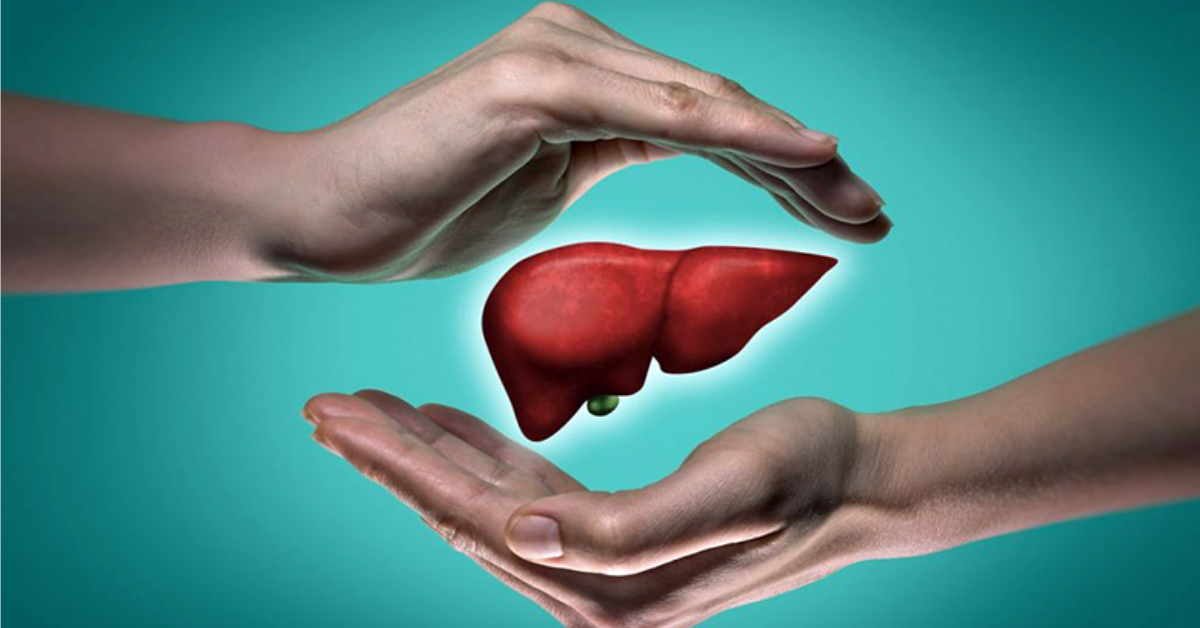Liver Cirrhosis Stem Cell Treatment in India: A Comprehensive Guide
Liver Cirrhosis Stem Cell Treatment India is a progressive liver disease that can cause irreversible damage to the liver over time. As the liver becomes scarred, its ability to function properly diminishes, leading to complications like liver failure, portal hypertension, and increased risks of liver cancer. Traditional treatments for cirrhosis focus on managing symptoms and preventing further liver damage. However, advancements in stem cell therapy have introduced a promising new avenue for the treatment of liver cirrhosis, offering hope to patients who may otherwise face limited treatment options.
India has emerged as a global hub for advanced medical treatments, including stem cell therapy for liver cirrhosis. In this article, we explore the role of stem cell treatment in managing liver cirrhosis, the benefits it offers, and why India is becoming a popular destination for patients seeking innovative therapies.
What is Liver Cirrhosis?
Liver cirrhosis occurs when the liver becomes severely scarred due to long-term damage caused by factors such as chronic alcohol consumption, viral infections like hepatitis, non-alcoholic fatty liver disease (NAFLD), and autoimmune conditions. As the liver tissue gets damaged, the liver can no longer perform its vital functions, including detoxifying harmful substances, producing proteins, and storing nutrients.
Conventional Treatments for Liver Cirrhosis
While liver transplantation is the most definitive treatment for end-stage cirrhosis, not all patients are eligible for this procedure due to factors like age, overall health, or lack of suitable donor organs. Conventional treatments for cirrhosis include medications to control symptoms, manage complications, and prevent further damage. In severe cases, the focus shifts to palliative care to improve quality of life.
However, these treatments do not address the underlying liver damage, and patients often face a limited lifespan and a reduced quality of life as the disease progresses.
Stem Cell Therapy: A Revolutionary Treatment for Liver Cirrhosis
Stem cell therapy is an innovative treatment that offers potential benefits for patients with liver cirrhosis. Stem cells have the ability to regenerate and repair damaged tissues, making them a promising solution for diseases that cause irreversible tissue damage, including liver cirrhosis. The therapy involves the use of stem cells to promote the healing and regeneration of liver tissue, reduce scarring, and improve liver function.
How Stem Cell Therapy Works for Liver Cirrhosis
Stem cell therapy for liver cirrhosis typically involves the following process:
-
Stem Cell Extraction: The first step is extracting stem cells from a donor or the patient’s own body. The most common sources of stem cells for liver treatment include mesenchymal stem cells (MSCs) derived from bone marrow, adipose tissue, or umbilical cord tissue.
-
Stem Cell Cultivation: Once extracted, the stem cells are cultured and multiplied in a laboratory to ensure there are enough cells for transplantation.
-
Stem Cell Injection: The stem cells are then injected into the patient’s liver either through a direct infusion into the liver or via intravenous (IV) injection. The stem cells travel to the damaged liver tissue, where they promote healing and regeneration.
-
Liver Regeneration: The stem cells help repair the damaged liver tissue, reduce fibrosis (scarring), and improve liver function. Over time, this can lead to better overall health, reduced symptoms, and an improved quality of life for patients.
Benefits of Stem Cell Therapy for Liver Cirrhosis
Stem cell therapy has shown great promise in the treatment of liver cirrhosis, offering several potential benefits, including:
-
Regeneration of Liver Tissue: Stem cells have the ability to regenerate damaged tissues, helping to reverse the scarring (fibrosis) in the liver and restore its normal function.
-
Improved Liver Function: By stimulating the growth of healthy liver cells, stem cell therapy can help improve vital functions such as detoxification, protein production, and bile production.
-
Reduction in Fibrosis: Stem cells can help reduce liver fibrosis, which is a hallmark of cirrhosis. By promoting the repair of liver tissue, stem cell therapy can halt or even reverse the progression of liver damage.
-
Reduced Need for Liver Transplantation: For many patients, stem cell therapy can slow or stop the progression of cirrhosis, potentially reducing the need for a liver transplant. In some cases, it may even make transplantation unnecessary.
-
Improved Quality of Life: As stem cell therapy regenerates liver tissue and improves function, patients often experience a reduction in symptoms such as fatigue, jaundice, abdominal pain, and swelling, leading to a better overall quality of life.
-
Minimally Invasive Procedure: Stem cell therapy is minimally invasive compared to traditional treatments like liver transplantation. The procedure involves a relatively simple stem cell injection, with less risk and a shorter recovery time.
Why Choose India for Stem Cell Therapy for Liver Cirrhosis?
India has become one of the leading destinations for stem cell therapy due to its high-quality medical services, experienced healthcare professionals, and cost-effective treatment options. Here are a few reasons why patients are increasingly choosing India for liver cirrhosis stem cell treatment:
-
Expertise and Specialization: India is home to some of the world’s top medical professionals and specialists in stem cell therapy. Leading hospitals and clinics offer advanced treatment options for liver cirrhosis, with experienced doctors and researchers leading the way in regenerative medicine.
-
State-of-the-Art Facilities: Medical institutions in India are equipped with cutting-edge technology and facilities, providing high standards of care for patients undergoing stem cell therapy.
-
Affordable Treatment: Stem cell therapy in India is significantly more affordable than in many Western countries. Patients can benefit from world-class treatment at a fraction of the cost, making it an attractive option for medical tourism.
-
No Waiting Lists: Unlike liver transplantation, which often has long waiting lists due to organ shortages, stem cell therapy is available immediately in India, allowing patients to receive timely treatment.
-
Personalized Care: Medical professionals in India offer personalized care to each patient, ensuring that the treatment is tailored to the patient’s specific needs and condition.
-
Medical Tourism Infrastructure: India has a well-developed medical tourism infrastructure, making it easy for international patients to access world-class healthcare. Many hospitals and clinics offer assistance with travel, accommodation, and visa arrangements to ensure a smooth treatment process.
What to Expect During Stem Cell Therapy for Liver Cirrhosis in India
If you decide to undergo stem cell therapy for liver cirrhosis in India, here’s what you can expect during the treatment process:
-
Initial Consultation: The first step is a consultation with the healthcare provider, where the doctor will assess your medical history, perform diagnostic tests, and determine if you’re a suitable candidate for stem cell therapy.
-
Pre-Treatment Preparations: Before the procedure, you may need to undergo some pre-treatment tests, including blood tests, liver function tests, and imaging studies, to evaluate the extent of liver damage.
-
Stem Cell Extraction and Cultivation: The stem cells will be extracted from your body or a donor, cultured in the lab, and prepared for injection.
-
Stem Cell Injection: The stem cells will be administered through an injection into the liver or intravenously, depending on the specific protocol used by the medical facility.
-
Post-Treatment Care: After the procedure, you will need to stay under observation for a few hours to monitor any potential side effects or complications. You may need to take medications or follow a specific diet to support the healing process.
-
Follow-Up: Regular follow-up visits will be scheduled to monitor your progress, assess liver function, and evaluate the success of the treatment.
Frequently Asked Questions (FAQ)
1. Is stem cell therapy for liver cirrhosis safe?
Yes, stem cell therapy for liver cirrhosis is generally safe when performed by qualified medical professionals in a controlled clinical environment. However, as with any medical treatment, there are some risks involved, which your doctor will discuss with you before the procedure.
2. How effective is stem cell therapy for liver cirrhosis?
Stem cell therapy has shown promising results in clinical trials, with many patients experiencing significant improvements in liver function and a reduction in fibrosis. However, the effectiveness of the treatment can vary depending on factors such as the stage of cirrhosis and the patient’s overall health.
3. How long does it take to recover from stem cell therapy?
Recovery time varies, but most patients can return to their normal activities within a few days to a week after the procedure. You may need to follow specific guidelines regarding diet and lifestyle during your recovery.
4. How much does stem cell therapy for liver cirrhosis cost in India?
The cost of stem cell therapy for liver cirrhosis in India varies depending on the clinic, the type of treatment, and the extent of the condition. However, it is significantly more affordable than in many Western countries.
5. Is stem cell therapy a cure for liver cirrhosis?
Stem cell therapy can help regenerate liver tissue, reduce fibrosis, and improve liver function, but it may not completely cure cirrhosis, especially in advanced stages. The treatment is aimed at halting the progression of the disease and improving quality of life.
Conclusion
Stem cell therapy offers a promising alternative for patients with liver cirrhosis, providing hope for those who are not candidates for traditional liver transplantation. India, with its advanced medical facilities, experienced professionals, and affordable treatment options, has become a leading destination for patients seeking innovative treatments for liver cirrhosis. If you’re considering stem cell therapy, it’s essential to consult with a qualified healthcare provider to understand the potential benefits, risks, and expected outcomes of the treatment.







